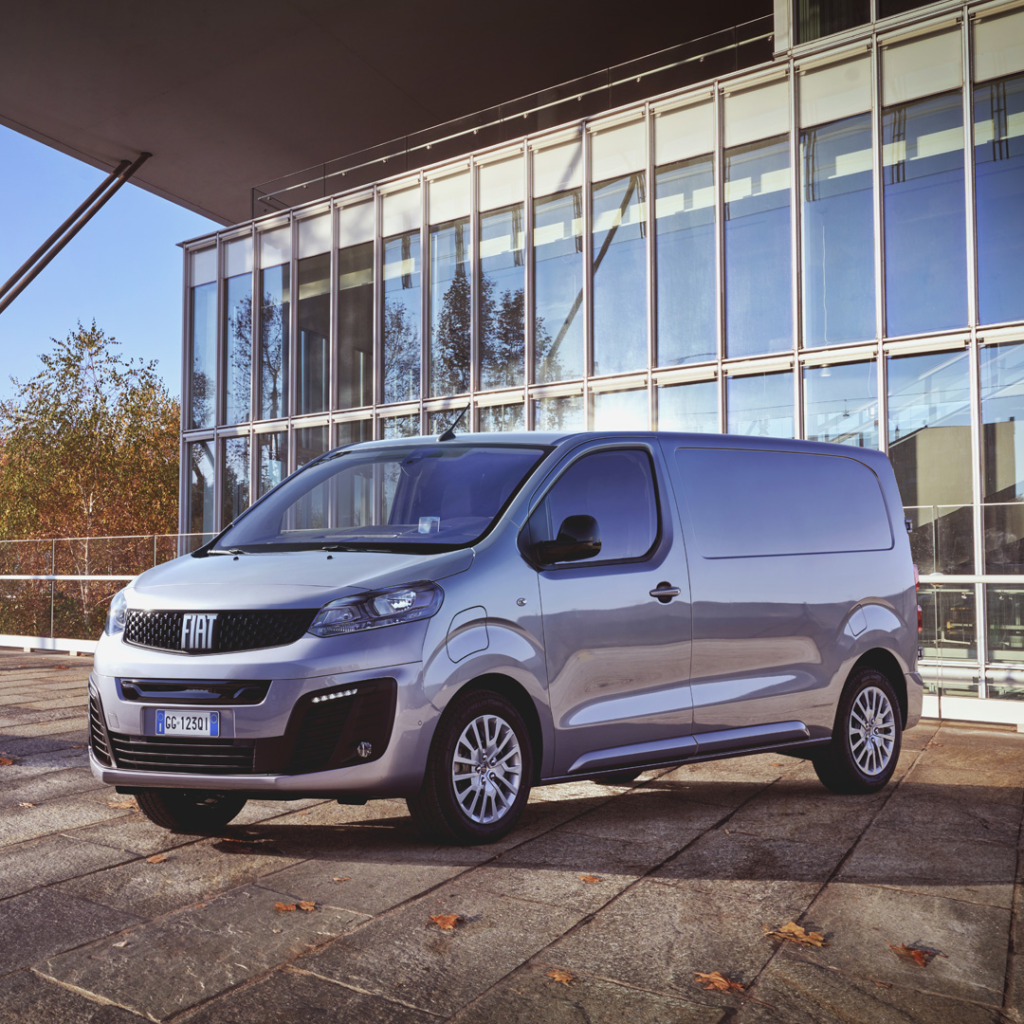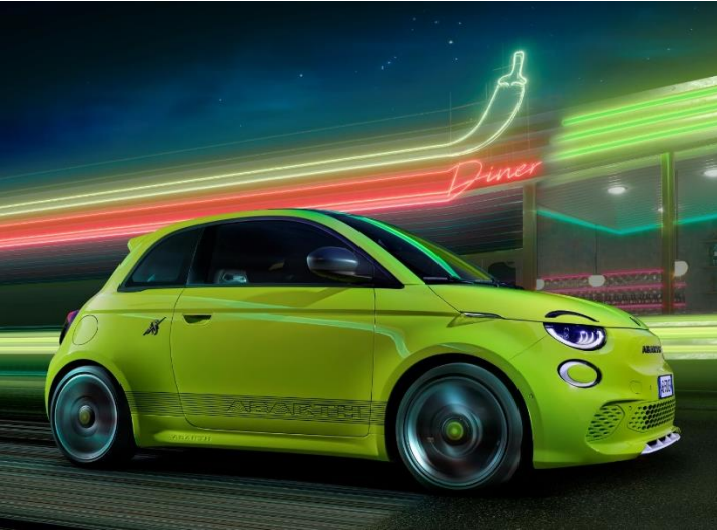The Fiat E-Scudo calls itself a van for true professionals, this the Italian brand’s interpretation of the mid-sized full-electric design. Here though, it’s backed by an IVECO service network far better suited to demanding commercial needs. If the current state of commercial vehicle EV technology makes sense for you in this sector, it’s quite a convincing proposition.
Background
The design of vans can be very similar but the dealer network and servicing support you get differs. So you need to think beyond the test drive and spec sheet figures. If you’re in search of a 1.0-tonne mid-sized electric van, there’s just a chance your enquiries could lead you to this one. The Fiat E-Scudo.
The Scudo nameplate is unlikely to be that familiar. It was reintroduced to the Fiat Professional van range in 2022. This was after a gap of six years, during which, the company’s mid-sized models were badged ‘Talento’. The Scudo model line’s return comes as its maker has reverted to the shared EMP2 Stellantis Group platform. Which means there can also be an all-electric version, this E-Scudo.
But it also means this full-battery LCV must compete against three near-identical Stellantis Group models with different badges. The Vauxhall Vivaro Electric, the Citroen e-Dispatch and the Peugeot e-Expert. Plus another near-identical model, the Toyota Proace Electric. From that list, the E-Scudo might not initially be your first pick if prices were similar. But unlike its rivals, it comes with the advantage of backing from a dealer network designed for commercials, rather than cars.
The Fiat E-Scudo Driving Experience
The E-Scudo van comes with a choice of batteries. The smaller of the two has 50kWh will take you up to 141 miles combined, or up to 196 miles in the city. With the pricier 75kWh battery fitted to your E-Scudo van, there’s a 202 mile combined range. This rises to 267 miles in the city.
If you’re wondering what driving a full-electric mid-sized van might be like, well, there’s not too much to get your head around. You turn the key in the ignition, wait for the starting beep, then flick the gear toggle into Drive. There’s a drive-mode selector that allows drivers to switch between ‘Eco’, ‘Normal’ and ‘Sport’ modes. The ‘Normal’ setting restricts you to 109hp and will feel a bit like driving a lower capacity diesel. ‘Eco’ mode restricts you further to 81.5hp and reduces the power consumption of the air conditioning and other accessories. If you want the full 136hp of the electric motor, selecting ‘Sport’ mode unlocks it. There’s also a gearshift selector ‘B’ option that ploughs extra regenerated energy back into the battery. This offers more resistance while you’re slowing down. Top speed is just 84mph.
The Fiat E-Scudo Design and Build
Unlike combustion-engined Scudos, this E-Scudo isn’t British-built in Luton. But is put together alongside it’s Stellantis Group electric LCV stablemates at a French production plant in Hordain. Apart from the badge work, there’s little to set this full-electric Scudo apart from its diesel-engined stablemates. As with the combustion models, there’s a choice of short wheelbase L1 or long wheelbase L2 variants. But Fiat doesn’t offer a high roof option. Visually, it looks pretty similar to the Vivaro Electric, but to differentiate the Scudo, there’s a Fiat-specific front grille. This is complete with the company’s latest brand badge, plus a swept-back pair of headlamps.
Inside, it’s all pretty identical to the Scudo diesel. Though in place of the rev counter, you get an energy gauge for the battery. The gear lever meanwhile, gets replaced by a drive selector for switching between the various driving modes. The 7-inch centre infotainment screen has a Power Flow option which shows you at any given time what’s being powered by what. A fuel gauge is provided but of course the purpose here is to show the remaining battery capacity. The water temperature gauge from the diesel Scudo is replaced by one showing energy consumption by the climate control system.
There’s quite a low seating position (for a van), with plenty of seat and wheel adjustment. As usual in this class, a three-person bench seat is fitted and there’s a Moduwork bulkhead flap so that longer items can be pushed through from the cargo area. The dashboard is almost identical to that you’ll find in the other versions of this design. Which means that most functions are on the central touchscreen, though the climate controls are separated out below. That Moduwork feature also allows the passenger seat to fold forward so the backrest can lay flat.
The Fiat E-Scudo Market and Model
As with other Stellantis Group mid-sized EV vans, E-Scudo LCV pricing starts at around £35,000 (exc VAT and OTR charges) after deduction of the £5,000 Government Plug-in Van Grant. This LCV is available as a van or a crew cab or as a short wheelbase chassis cab. That latter variant can be had in base ‘SX’ trim. The two van body styles, you’ll be choosing between ‘Technico’ or ‘Business’ levels of spec. It’s just over £3,000 to graduate from the base 50kWh battery to the larger 75kWh one.
All E-Scudo van models are decently equipped especially when it comes to safety items. ‘Technico’ spec gives you the basics. A driver’s airbag, electronic stability control, an alarm, a laminated acoustic windscreen, a full steel bulkhead, storage space beneath the front bench, twin sliding doors and 16-inch wheels. But you’ll need plusher ‘Business’ trim to get modern active safety aids like autonomous emergency braking, blind spot monitoring, traffic sign recognition and Lane departure warning. ‘Business’-spec models also get a 7-inch infotainment screen. Which includes ‘Apple CarPlay’ and ‘Android Auto’ connectivity. Plus body-coloured bumpers, rear parking sensors, a leather multi-function steering wheel and a Head-up display. There’s also an optional driver alert camera system.
The Fiat E-Scudo Practicalities and Cost
The EV drivetrain doesn’t affect the cargo area. Carriage capacity is unchanged over an ordinary diesel Scudo, at 5.3 m³ for the L1 6.1 m³ for the L2. The only practical area where you suffer with the electric model is the maximum payload. This will be around 200kg less than you’d get from the diesel. The payload is 1,226kg in the L1 and 1,000kg in the L2.
We gave you the driving range figures in our ‘Driving’ section. 133 miles for the 50kWh battery model and 196 miles for the 75kWh variant. The cost savings versus diesel model won’t of course be as great as they used to be, but are still substantial. At this vehicle’s original launch before the electricity crisis, Fiat reckoned that an operator would save around £100 a month. This is compared to a 2.0-litre diesel Scudo, based on covering 40 miles a day. Servicing costs will be lower as well. There’s no road tax, Benefit-in-Kind tax is levied at 60% of the normal van rate and the Scudo Electric is exempt from the London Congestion Charge.
Charging via a 7.4kW wall box will take over 7 hours for the 50kWh battery. This being more than 11 hours for the 75kWh unit. If you find a 100kW DC rapid charger when you’re out and about, you’ll be able to get the smaller battery from near empty to 80% full around half an hour. It will take around 45 minutes to do the same with the larger capacity unit. A 13amp Type2 cable in a domestic socket will give you six miles of range per hour and will need around 36 hours for a full charge.
Summary
There’s quite a lot to like here. As we’ve seen with Peugeot, Citroen, Vauxhall and Toyota versions of this all-electric design, the E-Scudo is as class-competitive as you can get. Especially when it comes to driving range, practicality and running costs for a mid-sized EV van of this kind.
As we said earlier, what we think sets it apart is the IVECO service centre back-up, based around the much more demanding logistical needs of mission-critical large HGVs. The chances are your business is simply going to be looked after better than by a dealership that only specialises in cars. If Fiat Professional could complete the proposition by offering here the same opportunity for up to 10 years of warranty coverage that you can get with a comparable Toyota Proace Electric, we’d have no hesitation in making the E-Scudo our top pick in this class. As it is, it gets very close to that. If you are interested in the Fiat E-Scudo get in touch.





